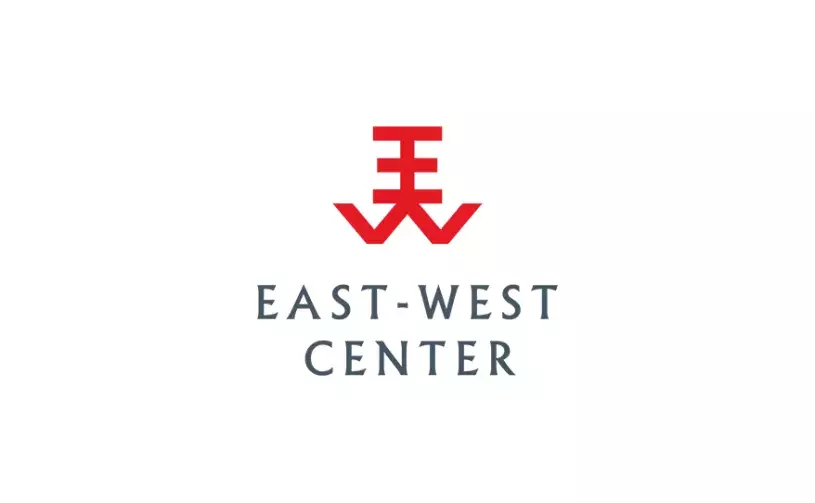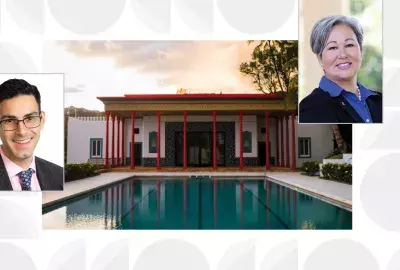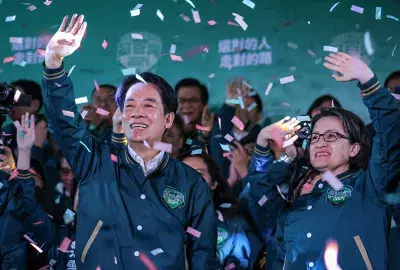Error message

By Jagannath Panda
HONOLULU (May 20, 2019)—In a 2014 speech, Xi Jinping described a multi-pronged strategy for increasing Chinese influence in Asia under the rubric “Asia for Asians.” Central to this concept is an expanding foreign relations, economic, and military role for China in the region, combined with a shrinking role for the United States.
Xi’s vision for increasing Chinese influence in Asia includes several ambitious initiatives. Two of the most prominent are the Asian Infrastructure Investment Bank (AIIB) and the Belt and Road Initiative (BRI). In addition to development in the region, the vision includes a leading role for Asia on the world stage.
But to India, China’s vision for a new regional architecture in Asia is clearly deceptive. On the one hand, Beijing pursues a soft foreign relations strategy to promote “development partnerships,” while on the other hand, it exhibits a heavy reliance on military intimidation to enforce claims over disputed land and maritime territories in the region.
India’s perspective is shaped by a number of factors: India’s growing international role as an emerging power, India’s and China’s shared interest in reforming global financial institutions in favor of emerging economies, and the two countries’ foreign policy interests that sometimes align but often compete. While New Delhi is a partner in some of China’s specific bilateral and multilateral initiatives, awareness of China’s strategic desire to dominate Asian affairs has made India reluctant to endorse other Chinese propositions. India’s stance on the AIIB and the BRI reflects this narrative.
Although initiated by China and headquartered in Beijing, the AIIB is made up of about 70 member nations, including nearly all the developing nations of Asia plus Australia, Brazil, France, Germany, Spain, and the United Kingdom—but conspicuously not the US. Some countries worry about governance and transparency in this Chinese-sponsored institution, while others welcome a new source of funding for international development projects as an alternative to the classical Bretton Woods institutions such as the World Bank and the International Monetary Fund, which they perceive as unduly restrictive and cumbersome.
Joining the AIIB as a founding member has offered India an opportunity to play a greater role in infrastructure finance and sustainable development in Asia. New Delhi believes that the AIIB will increase India’s access to resources, particularly for national and cross-border infrastructure development.
By contrast, India has expressed strong reservations about the BRI from the beginning, boycotting China-sponsored Belt and Road Forums that were held in 2017 and 2019. A major objection is the controversial China-Pakistan Economic Corridor (CPEC) that runs through Pakistan-occupied Kashmir, ignoring New Delhi’s sensitivity concerning this disputed territory. As reported widely in the media, India’s ambassador to China, Vikram Misri, stated that “no country can participate in an initiative that ignores its core concerns on sovereignty and territorial integrity.”
India has also joined the US and several other countries in voicing concerns about BRI projects that have left smaller countries trapped in debt to China. Indeed, India has consistently questioned the legitimacy of the BRI, arguing that “such initiatives must be based on universally recognised international norms, including good governance, the rule of law, openness, transparency, and equality.”
These contrasting standpoints on the AIIB and the BRI illustrate how New Delhi is responding to China sometimes in terms of cooperation and sometimes in opposition. The fundamental difference between the two responses lies in the fact that the AIIB is a multilateral institution that promotes universal values and endorses internationalism, while the BRI is a unilateral Chinese-government scheme to gain international influence through infrastructure and transportation investments around the world.
At a broader level, the Chinese view of Asia is based on a “Sino-centric” vision for the region that includes opposition to the United States. This contradicts the Indian perspective that working with countries outside Asia, including the US, strengthens the inclusive character of the region. Specifically, New Delhi’s vision of a regional security architecture is based on principles of globalism that complement India’s traditional ethos of Vasudhaiva Kutumbakam (or “one family”).
The concept of Vasudhaiva Kutumbakam is not a foreign policy strategy per se, but it has informed India’s ideas on international relations over time, including the current “Neighborhood First” policy that aims to establish stable relations with India’s immediate neighbors in South Asia. In a wider context, India’s current concept of a “Free and Open Indo-Pacific”—as initiated by the US—is based on a multipolar regional order within a globalist foreign policy framework.
The two primary objectives of India’s recent dealings with China have been to resist Beijing’s protectionist tendencies within the global order and to reform global financial institutions to favor emerging economies. Given these guiding principles, India has chosen to participate in some Chinese economic initiatives, such as the AIIB, but not in others, such as the BRI. New Delhi continues to evaluate each opportunity for collaboration with China on a case-by-case basis.
###
Dr. Jagannath Panda is a fellow at the Institute for Defence Studies and Analyses (IDSA), New Delhi. He was a participant in the Indo-Pacific Security Dialogue held at the East-West Center in December 2018. He can be reached at [email protected].
Download a pdf version of this Wire article.
The East-West Wire is a news, commentary, and analysis service provided by the East-West Center in Honolulu. All or any part of the Wire content may be used by media with attribution to the East-West Center or the person quoted. To receive Wire articles via email, subscribe here. For links to all East-West Center media programs, fellowships and services, see EastWestCenter.org/Journalists.
The full list of East-West Wires produced by the Research Program is available on the East-West Center website at EastWestCenter.org/Research-Wire. For more on the East-West Center Research Program, see EastWestCenter.org/Research.
The East-West Center promotes better relations and understanding among the people and nations of the United States, Asia, and the Pacific through cooperative study, research, and dialogue.
Series editors:
Derek Ferrar
[email protected]
Sidney B. Westley
[email protected]
The views expressed are those of the author and do not necessarily reflect the policy or position of the East-West Center or any organization with which the author is affiliated.
By Jagannath Panda
HONOLULU (May 20, 2019)—In a 2014 speech, Xi Jinping described a multi-pronged strategy for increasing Chinese influence in Asia under the rubric “Asia for Asians.” Central to this concept is an expanding foreign relations, economic, and military role for China in the region, combined with a shrinking role for the United States.
Xi’s vision for increasing Chinese influence in Asia includes several ambitious initiatives. Two of the most prominent are the Asian Infrastructure Investment Bank (AIIB) and the Belt and Road Initiative (BRI). In addition to development in the region, the vision includes a leading role for Asia on the world stage.
But to India, China’s vision for a new regional architecture in Asia is clearly deceptive. On the one hand, Beijing pursues a soft foreign relations strategy to promote “development partnerships,” while on the other hand, it exhibits a heavy reliance on military intimidation to enforce claims over disputed land and maritime territories in the region.
India’s perspective is shaped by a number of factors: India’s growing international role as an emerging power, India’s and China’s shared interest in reforming global financial institutions in favor of emerging economies, and the two countries’ foreign policy interests that sometimes align but often compete. While New Delhi is a partner in some of China’s specific bilateral and multilateral initiatives, awareness of China’s strategic desire to dominate Asian affairs has made India reluctant to endorse other Chinese propositions. India’s stance on the AIIB and the BRI reflects this narrative.
Although initiated by China and headquartered in Beijing, the AIIB is made up of about 70 member nations, including nearly all the developing nations of Asia plus Australia, Brazil, France, Germany, Spain, and the United Kingdom—but conspicuously not the US. Some countries worry about governance and transparency in this Chinese-sponsored institution, while others welcome a new source of funding for international development projects as an alternative to the classical Bretton Woods institutions such as the World Bank and the International Monetary Fund, which they perceive as unduly restrictive and cumbersome.
Joining the AIIB as a founding member has offered India an opportunity to play a greater role in infrastructure finance and sustainable development in Asia. New Delhi believes that the AIIB will increase India’s access to resources, particularly for national and cross-border infrastructure development.
By contrast, India has expressed strong reservations about the BRI from the beginning, boycotting China-sponsored Belt and Road Forums that were held in 2017 and 2019. A major objection is the controversial China-Pakistan Economic Corridor (CPEC) that runs through Pakistan-occupied Kashmir, ignoring New Delhi’s sensitivity concerning this disputed territory. As reported widely in the media, India’s ambassador to China, Vikram Misri, stated that “no country can participate in an initiative that ignores its core concerns on sovereignty and territorial integrity.”
India has also joined the US and several other countries in voicing concerns about BRI projects that have left smaller countries trapped in debt to China. Indeed, India has consistently questioned the legitimacy of the BRI, arguing that “such initiatives must be based on universally recognised international norms, including good governance, the rule of law, openness, transparency, and equality.”
These contrasting standpoints on the AIIB and the BRI illustrate how New Delhi is responding to China sometimes in terms of cooperation and sometimes in opposition. The fundamental difference between the two responses lies in the fact that the AIIB is a multilateral institution that promotes universal values and endorses internationalism, while the BRI is a unilateral Chinese-government scheme to gain international influence through infrastructure and transportation investments around the world.
At a broader level, the Chinese view of Asia is based on a “Sino-centric” vision for the region that includes opposition to the United States. This contradicts the Indian perspective that working with countries outside Asia, including the US, strengthens the inclusive character of the region. Specifically, New Delhi’s vision of a regional security architecture is based on principles of globalism that complement India’s traditional ethos of Vasudhaiva Kutumbakam (or “one family”).
The concept of Vasudhaiva Kutumbakam is not a foreign policy strategy per se, but it has informed India’s ideas on international relations over time, including the current “Neighborhood First” policy that aims to establish stable relations with India’s immediate neighbors in South Asia. In a wider context, India’s current concept of a “Free and Open Indo-Pacific”—as initiated by the US—is based on a multipolar regional order within a globalist foreign policy framework.
The two primary objectives of India’s recent dealings with China have been to resist Beijing’s protectionist tendencies within the global order and to reform global financial institutions to favor emerging economies. Given these guiding principles, India has chosen to participate in some Chinese economic initiatives, such as the AIIB, but not in others, such as the BRI. New Delhi continues to evaluate each opportunity for collaboration with China on a case-by-case basis.
###
Dr. Jagannath Panda is a fellow at the Institute for Defence Studies and Analyses (IDSA), New Delhi. He was a participant in the Indo-Pacific Security Dialogue held at the East-West Center in December 2018. He can be reached at [email protected].
Download a pdf version of this Wire article.
The East-West Wire is a news, commentary, and analysis service provided by the East-West Center in Honolulu. All or any part of the Wire content may be used by media with attribution to the East-West Center or the person quoted. To receive Wire articles via email, subscribe here. For links to all East-West Center media programs, fellowships and services, see EastWestCenter.org/Journalists.
The full list of East-West Wires produced by the Research Program is available on the East-West Center website at EastWestCenter.org/Research-Wire. For more on the East-West Center Research Program, see EastWestCenter.org/Research.
The East-West Center promotes better relations and understanding among the people and nations of the United States, Asia, and the Pacific through cooperative study, research, and dialogue.
Series editors:
Derek Ferrar
[email protected]
Sidney B. Westley
[email protected]
The views expressed are those of the author and do not necessarily reflect the policy or position of the East-West Center or any organization with which the author is affiliated.
East-West Wire
News, Commentary, and Analysis
The East-West Wire is a news, commentary, and analysis service provided by the East-West Center in Honolulu. Any part or all of the Wire content may be used by media with attribution to the East-West Center or the person quoted. To receive East-West Center Wire media releases via email, subscribe here.
For links to all East-West Center media programs, fellowships and services, see www.eastwestcenter.org/journalists.







